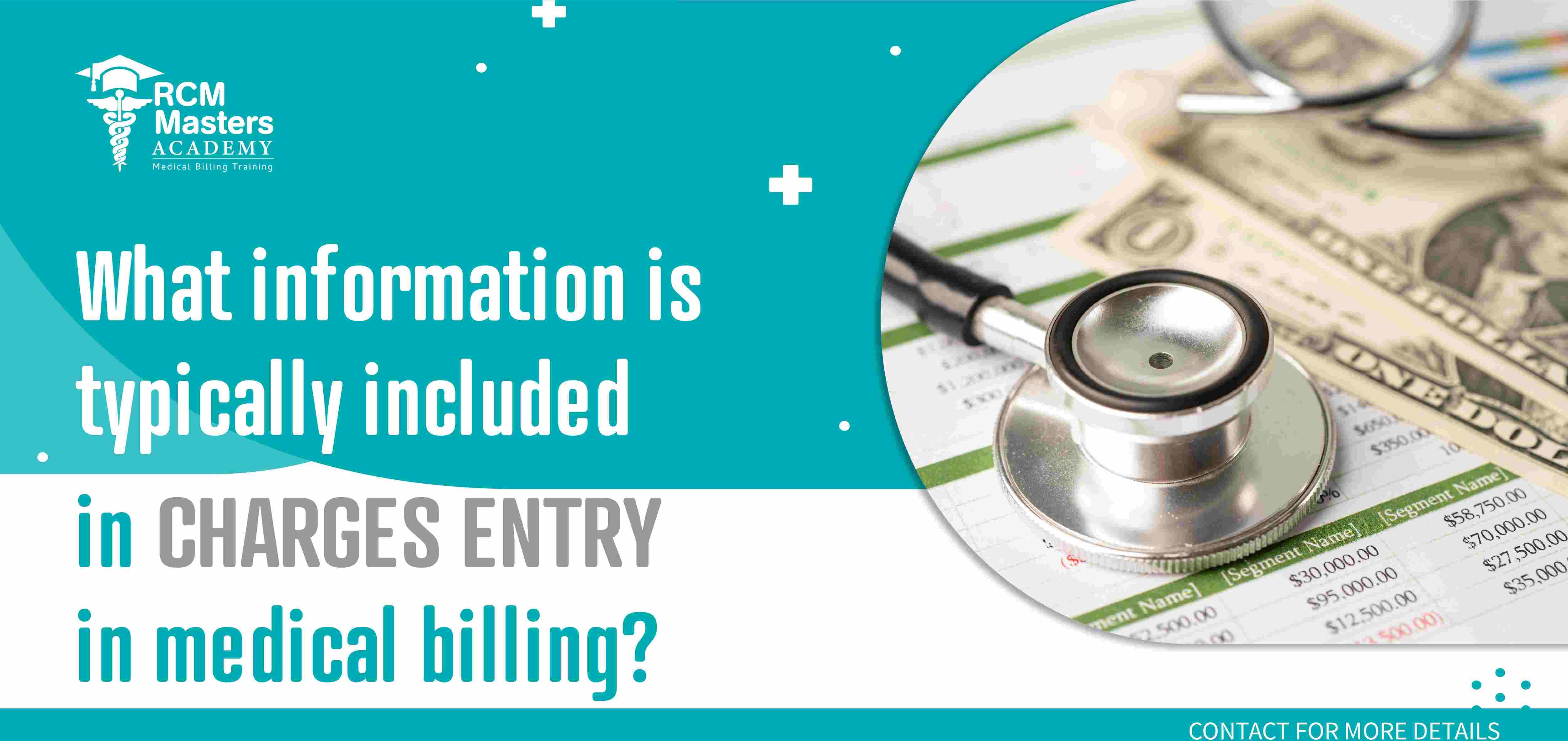 info@rcmmastersacademy.com
info@rcmmastersacademy.com

Medical billing is an essential process in the healthcare industry, as it ensures that healthcare providers are appropriately compensated for the services they render. One of the critical components of medical billing is the charges entry process. Charges entry refers to the process of entering charges for medical services rendered by healthcare providers into the billing system. This process is crucial because it determines the amount a healthcare provider will receive for their services. In this article, we will discuss the information typically included in charges entry in medical billing.
1. Patient Information
Patient information is a crucial part of charges entry. This information includes the patient's name, date of birth, insurance information, and other personal details. The charges entry process requires that the patient information be verified to ensure that the billing information is accurate. It is essential to note that the accuracy of patient information is crucial to ensure that the claims are paid on time.
2. Healthcare Provider Information
The healthcare provider's information is also a crucial part of charges entry. This information includes the healthcare provider's name, address, phone number, and other relevant details. The healthcare provider's information is used to verify the services rendered and ensure that the claims are paid to the right provider.
3. Date of Service
The date of service is another critical piece of information included in charges entry. It refers to the date on which the healthcare service was rendered. The date of service is used to determine the eligibility of the claim and ensure that it is paid on time.
4. Procedure Code
The procedure code is a numerical code that represents the healthcare service rendered. The procedure code is used to determine the amount that the healthcare provider will be paid for the service rendered. Each procedure code has a corresponding fee that the healthcare provider will receive.
5. Diagnosis Code
The diagnosis code is a numerical code that represents the patient's medical condition. The diagnosis code is used to determine the medical necessity of the service rendered. It is also used to determine the eligibility of the claim.
6. Service Location
The service location refers to the place where the healthcare service was rendered. The service location is essential in determining the eligibility of the claim and ensuring that the claims are paid on time.
7. Charges
Charges refer to the amount that the healthcare provider will receive for the service rendered. The charges are calculated based on the procedure code and the fee schedule.
Charges entry is an essential process in medical billing. The accuracy of the information included in charges entry is crucial to ensure that the claims are paid on time and that healthcare providers are appropriately compensated for their services. The information typically included in charges entry includes patient information, healthcare provider information, date of service, procedure code, diagnosis code, service location, and charges. Healthcare providers must ensure that the information included in charges entry is accurate to prevent claim denials and ensure timely payment of claims.
You can enroll for our Online Medical Billing Training here: